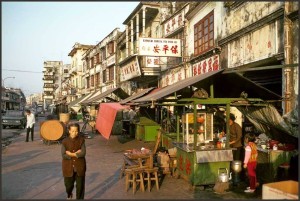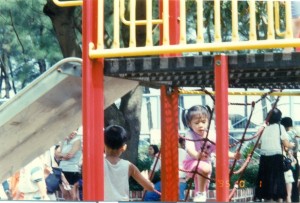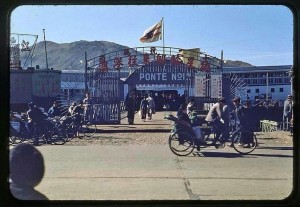By Ling Tan, Janette Jiang, Crystal Zhang
Macao has changed dramatically since the opening-up of gaming concessions and the individual free travel scheme for mainland tourists a decade ago. Urbanization and globalization have gradually altered its scenarios as well; Casinos, resorts and fashion shops occupy the living space; High-rise buildings sprout up in the city.
According to the information released by the Statistics and Census Service, the city had 217,335 vehicles by the end of 2013, a 52% hike from 2003. Moreover, the whole population of Macao surged to 607,500 by the end of 2013, with a growth of 159,500 through the past decade. Undoubtedly, the past decade has resulted in a tremendous change and left enduring marks on its citizens. More and more people visit Macao in order to have a taste of “the Las Vegas of Asia”. They immerse in a luxurious world, appreciate the exotic sights and enjoy the modern life nowadays; however, the lives of local citizens have undergone unprecedented changes in keeping pace with the development of the city.
Citizens might have forgotten what the downtown used to be like, while the faded photographs document Macao’s old face of the past several decades. Looking back at the old photographs and reminiscing, citizens tend to value these transformations as mixed blessings. “The change of the city truly benefits us but sometimes I wish I could go back to the old days and visit some old places. However, I am afraid that Macao can’t afford to return to its old time,” one citizen Amy Pak expressed her concern. On one hand, the booming economy and prosperous tourism industry bring in higher in- come for citizens; on the other hand, it also causes numerous problems, such as light pollution, traffic jams, noise pollution, parking difficulties and decrease in community space and so on.
The loss of childhood memories
“My feeling towards the changes of city appearance is subtle as they are minor and piece- meal,” a 22 years old college student Susan Sou said. She lives near the Lou Lim Ieoc Garden, where she used to have a picnic a lot and a loving memory of her childhood. While with the raising number of foreign labor, Sou feels like the garden is “occupied” by others. She added: “As a result, memories of my childhood, together with the garden, faded with time.”
For Sou, what count most are not the transition of city appearances but the sense of humanity. “The distance between people becomes wider, and there is less humanity while more conflicts occur.” She expressed her concern, “Thus, we are much easier to ignore or be aggressive toward others. The town is less peaceful and pleasant. “
Reduced community spaces

Snack shops and little stores selling fish balls and desserts in 1973. (Photo provided by Micheal Chan)
Amy Pak is a 43-year-old citizen living in the Pearl of the Orient district, where she enjoyed spacious roads and a smooth flow of traffic decades ago. “The spectacular buildings boom overnight, the town bristles with buildings and vehicles today.” In her childhood, she could enjoy a wonderful sea view from her apartment. Whereas, today skyscrapers block her view, nothing can be seen except the neighboring buildings. Moreover, the number of vehicles surges dramatically causing serious traffic jams. Despite the traffic congestion, Pak admitted that the bus frequency is increased compared with a decade ago. She added that it’s difficult to park her scooter due to the sharp rise of vehicles; sometimes she even needs to go across several blocks from her apartment to search for a parking space. “The city appearances are very different from my child- hood, before there were many gardens and people communicated a lot. It’s sad that the community and public space are diminishing.”
Irreversible transition
Debby Seng, a 23-year-old citizen, lives near the border gate, where she has witnessed how this city becomes more lively but overcrowded sometimes. “Old stores are replaced by big-scale chain stores,” Seng said. In her memory, a majority of retail properties were vacant a decade ago, while most of them are occupied now. “Back then I could jog down to the street to buy fish balls and desserts with my classmates after school. We were acquainted with the shop owners and often chatted with them.” While now Seng feels alienated from new shop owners as everything changes so fast with new chain stores replacing small old snack shops swiftly and constantly. “The economy is prosperous but the quality of life declines. Everything is so expensive and continually becomes more expensive; however, the growth of our income lags much behind the increase of commodity prices.” She thinks the government should take responsibility to figure out a better and balanced way to manage the development of the tourism industry.
No one could deny that Macao is a modern city full of vitality. Even a German ex- change student Heike Sahner said she would definitely revisit Macao in the future for its great potential development. Certainly, there is nothing we can assure for the future but we can learn from the past. The 10 years’ development should be a precious experience for Macao. As for the next 10 years and the near future, let’s learn from past and look ahead.


